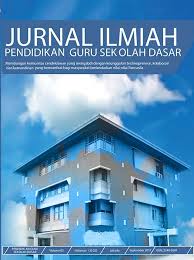TEHNIK ISYABA SOLUSI UNTUK MENGEMBANGKAN KEMAMPUAN KOMUNIKASI UNTUK ANAK TUNAGANDA ( TUNARUNGU DAN TUNANETRA)
Abstract
Keywords
Full Text:
PDFReferences
Aisyah, Siti.2004 Hubungan Antara Kemampuan Memahami
Ujaran Dengan Ketrampilan Menulis Anak Tunarungu Kelas
Dasar III Di SLB – B Karya Mulia I Surabaya.Un5ersitas Negeri
Surabaya. Fakultas Ilmu Pendidikan.
Andreas Dwijosumarto. 2006. Ortopedagogik Anak Tunarungu. J.
Jakarta : Dirjen DIKTI. Departemen Pendidikan Nasional
Jakarta,” Kamus Besar Sistem Isyabat Bahasa Indonesia” Direktorat Pembinaan Sekolah Luar Biasa PUMK Pengembangan
Sistem dan Standart Pengelolaan Pendidikan Khusus dan
layanan Khusus, Jakarta tahun 2008.
Direktorat Jenderal Manajemen Pendidikan Dasar dan Menengah Direktorat Pembinaan Sekolah Luar Biasa, 2006. Standar
Kompetensi dan Kompetensi Dasar Sekolah Dasar Luar Biasa
Tunarungu. Jakarta : Depdiknas.
https://armainieducati.wordpress.com/2011/03/04/bina- bicara/luk.staff.ugm.ac.id/atur/UU20-2003Sisdiknas.
Sunanto, J, 2005. Potensi Anak Berkelainan Penglihatan. Jakarta :
Depdiknas.
Udin S. Winataputra,. 2008 eprints.uny.ac.id/9829/1/bab1.pdf
Widdjajantin, A, 1995. Ortopaedagogik Tunarungu I. Jakarta : Depdikbud.
DOI: https://doi.org/10.31326/jipgsd.v4i2.686
Refbacks
- There are currently no refbacks.

This work is licensed under a Creative Commons Attribution-ShareAlike 4.0 International License.





